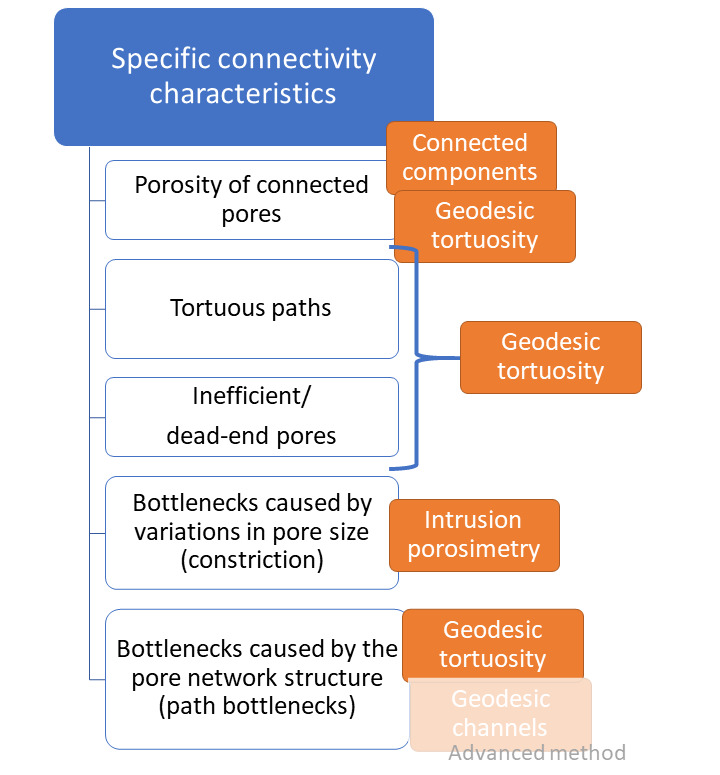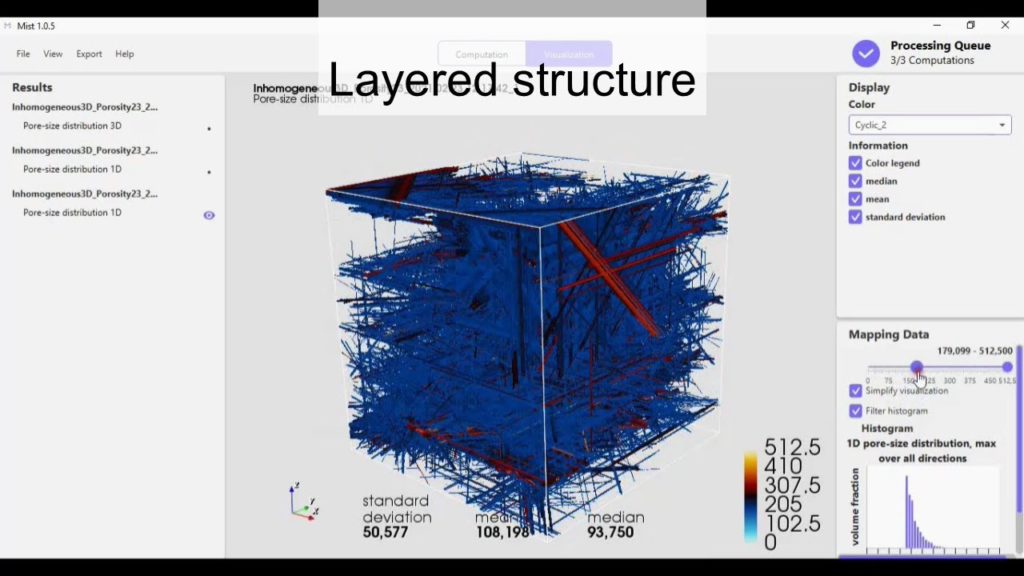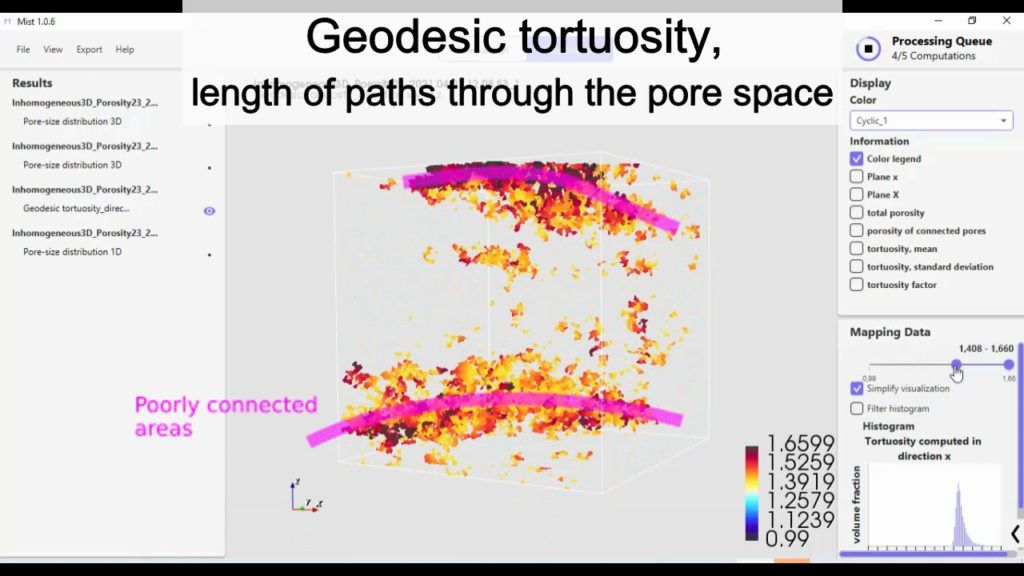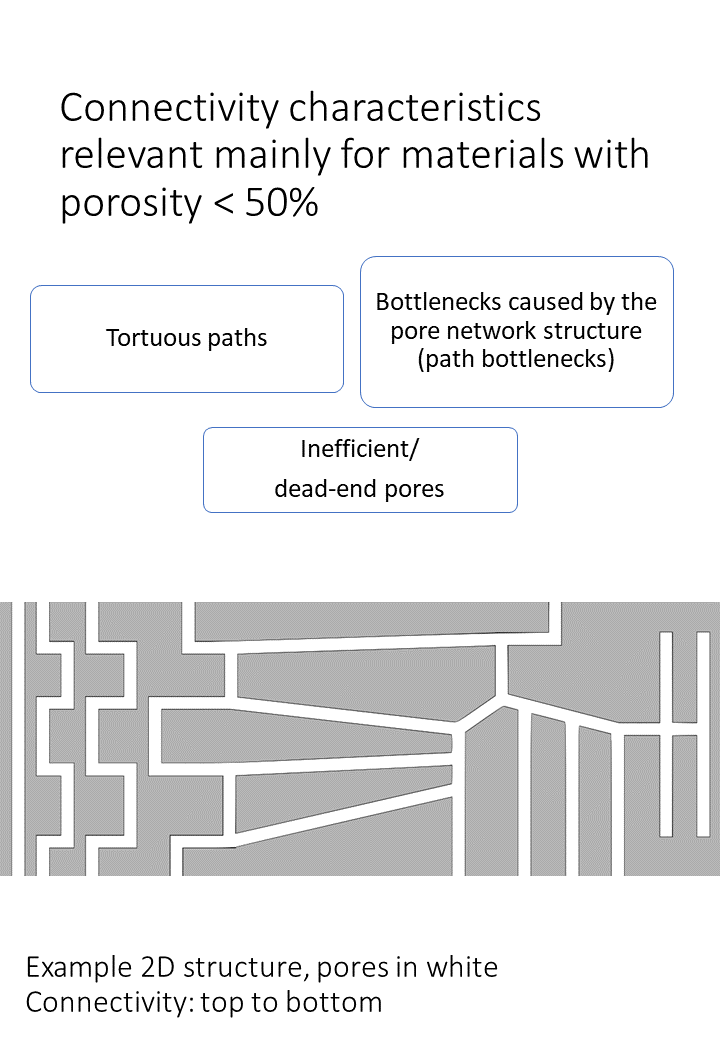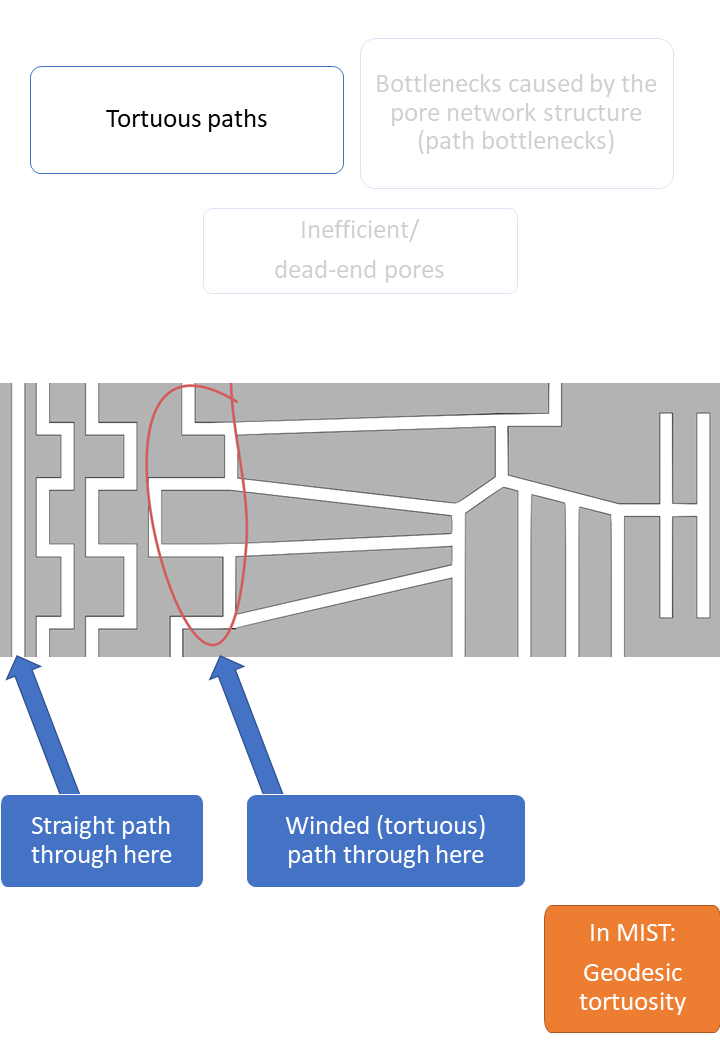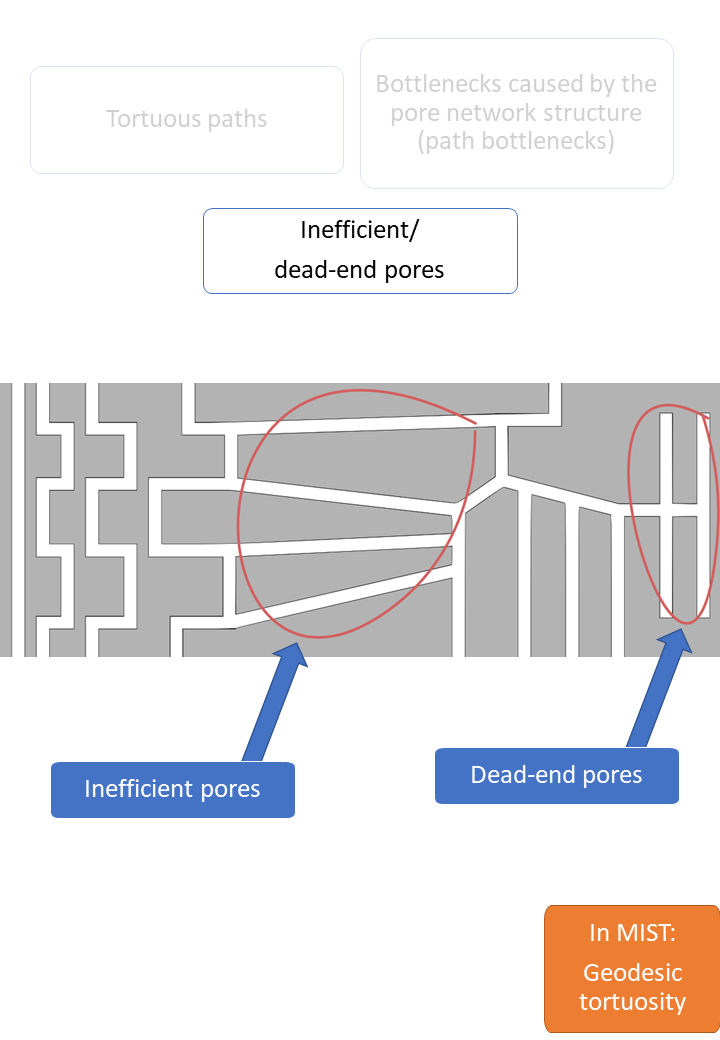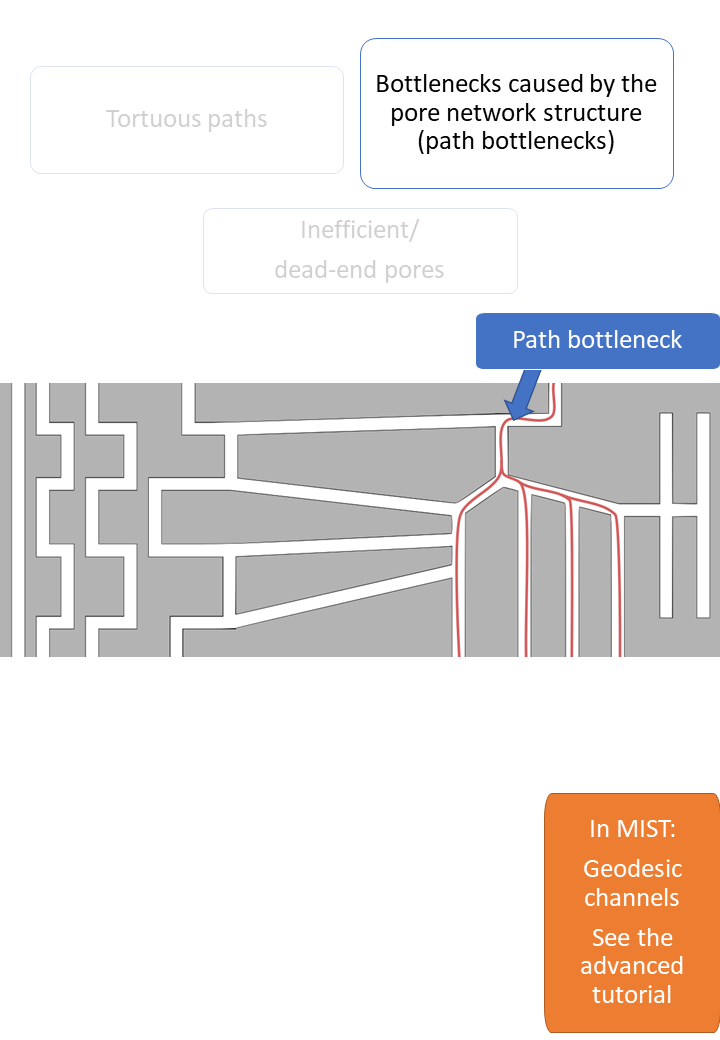Data driven design of improved porous materials
Innovation in materials science is increasingly dependent on detailed knowledge of the materials structure and its relationship to the large scale properties of the material.

Mist includes methods for describing the 3D structure of porous materials which have been proven to be effective in explaining and predicting material properties (details below and in Tutorial, Connecting 3D geometry with material properties). You can use the tools in Mist to gain a deeper understanding of the structure/property-relationship of your material by quantifying geometrical characteristics and exploring the results through interactive 3D visualization. The tools are helpful for exploring the 3D structure of a single sample of a material, but they are perhaps most powerful when applied to larger datasets where you can use Mist to differentiate the 3D structure of multiple samples.
Anisotropy, heterogeneity and connectivity in Mist
General geometrical characteristics of importance are anisotropy, heterogeneity and connectivity. Connectivity is often more important for materials with relatively low porosities, but this depends on the application. Flow and wettability for example depends on the pore geometry in a more complex way than diffusion, electrical conductivity and heat transfer.
See the examples in the two videos below for examples of how you can quantify and visually investigate anisotropy, heterogeneity and connectivity in Mist. The videos show pore size methods (first video) and geodesic tortuosity (second video) applied to a complex 3D structure. For more information about the methods and settings, see Tutorial, Part II.
How to measure the
characteristics in Mist
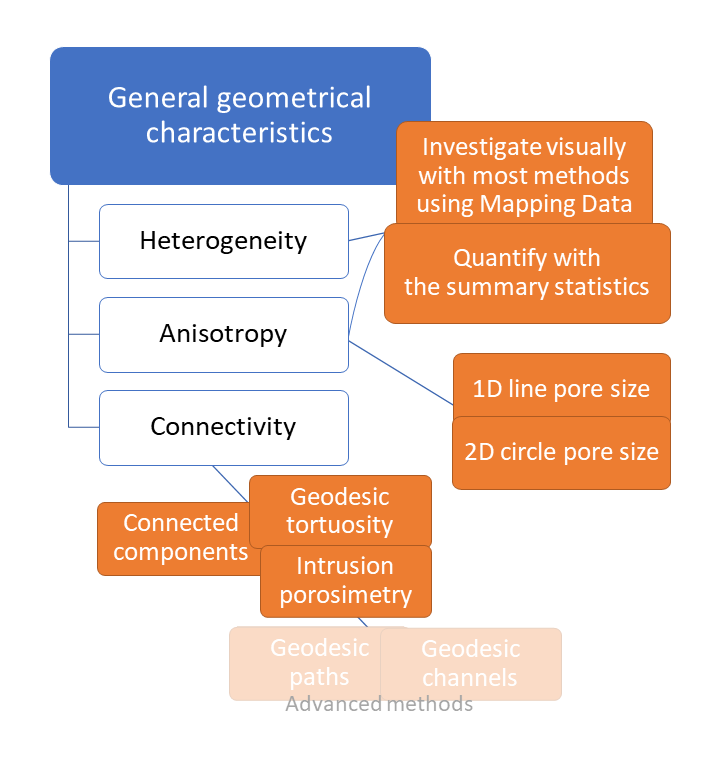
Specific connectivity characteristics in Mist
The specific connectivity characteristics listed below are all good at explaining and predicting material properties such as electrical conductivity, heat transfer, mass transport and wettability. Simple formulas are often sufficient to explain a large part of the variation in material properties for large datasets (see Tutorial, Connecting 3D geometry with material properties and Scientific resources).
Details about the characterization methods are given in Tutorial, Part II, but here are some simple illustrations of what aspects of the pore geometry the methods capture.
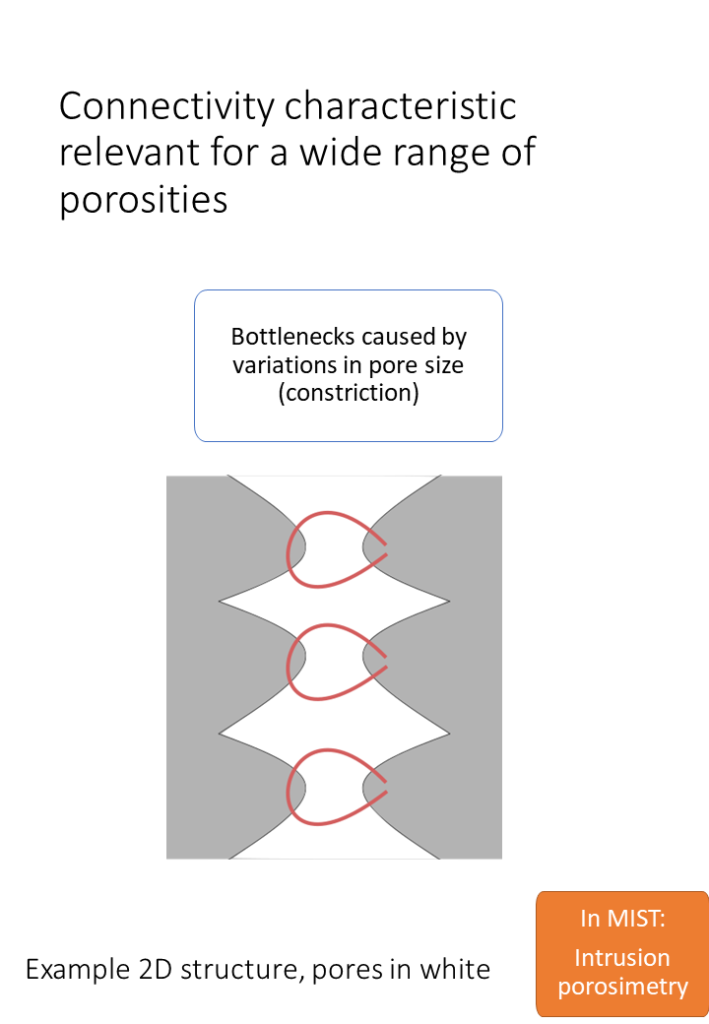
How to measure the connectivity
characteristics in Mist
